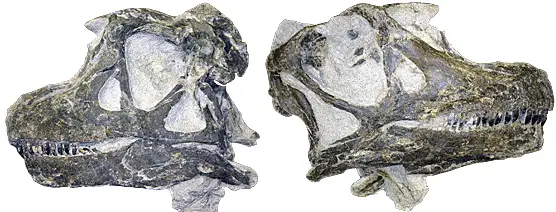Full Skulls of Four Juvenile Sauropods Found in Utah
Table of Contents
Sauropod skulls are rare indeed. Four skulls of juveniles were found head first in the Cretaceous sandstone on the Utah-Colorado border in the United States.
In the canyons of prehistory in Dinosaur National Park in eastern Utah, a new dinosaur was recently discovered. It is a gigantic brachiosaurid sauropod, with the first full skull found of a Cretaceous dinosaur from North America. The dinosaur, named Abydosaurus mcintoshi, is a long-necked, long-tailed, four-legged, plant-eating dinosaur.
The naming of New Species of Dinosaur
The new dinosaur is named Abydosaurus, after the Egyptian necropolis, Abydos. Abydos is the city overlooking the Nile where the mythological head and neck of Osiris were said to be buried. The skull and neck of Abydosaurus were similarly found overlooking the Green River in Utah. The specific name mcintoshi refers to the American paleontologist, Jack McIntosh, famous for his studies of sauropod dinosaurs.
https://www.youtube.com/watch?v=e-EMBoJasD0
Discovery of Abydosaurus
The dinosaur was discovered head first, an unusual find for paleontologists. It was found in heavy layers of the upper Early Cretaceous sandstone rock on the borders of Utah and Colorado. It was first found in 2005, but the difficulty of extracting it from the heavy rock delayed the excavation. After being unsuccessful with jackhammers, blasting was finally resorted to revealing the skulls.

Actually, two full skulls were found and two partial skulls. All skulls belonged to juveniles. Abydosaurus roamed North America 105 million years ago. The closest relative of Abydosaurus is the Brachiosaurus which lived 45 million years earlier.
Sauropod Features
Sauropods are the largest dinosaurs to have roamed the earth. They are known for their heavy bodies and long, thin necks. Of around 120 known species of sauropods, only eight complete skulls have been discovered.
Unlike the bones of mammals, the skulls of the sauropods are made up of very thin bones bound together by soft tissue, as their skulls were attached to such very long necks and it was necessary for the necks and skulls to be lightweight. These fragile skulls usually disintegrate quickly after death, and that is why the discovery is so amazing. The skulls demonstrate that the Abydosaurus did not chew its food, it merely tore the food and swallowed it. The many narrow teeth were frequently replaced.
Gauging from the discovered skulls, the juveniles should be seen to average 25 feet long. The full skeletons are yet to be uncovered. It is unknown how large the Abydosaurus would have become in adulthood.
Sources:
- “New dinosaur discovered head first, for a change,” ScienceDaily. Feb. 24, 2010.
- “New Species of Dinosaur Found in Eastern Utah Rock.” New York Times. February 23, 2010.”
